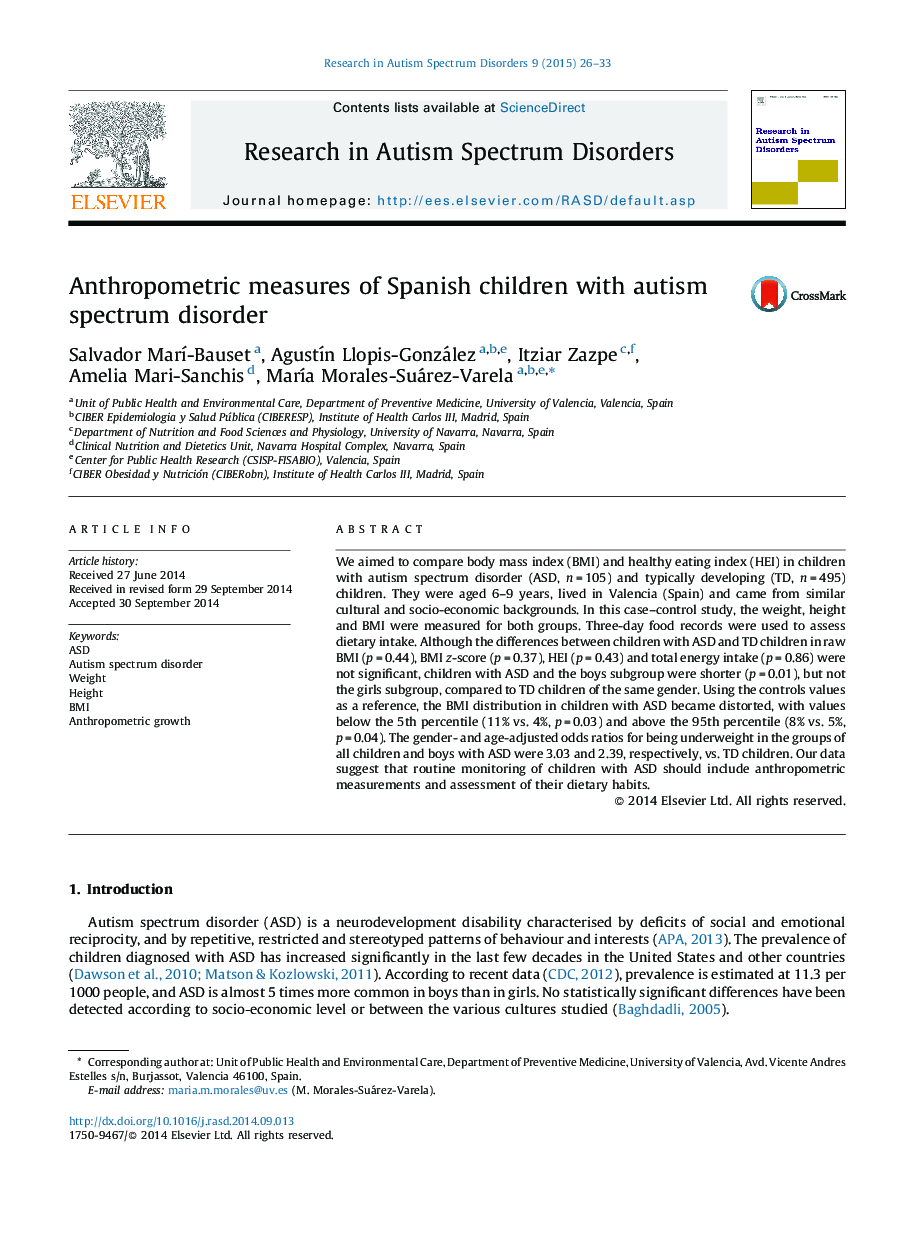| Article ID | Journal | Published Year | Pages | File Type |
|---|---|---|---|---|
| 6848040 | Research in Autism Spectrum Disorders | 2015 | 8 Pages |
Abstract
We aimed to compare body mass index (BMI) and healthy eating index (HEI) in children with autism spectrum disorder (ASD, n = 105) and typically developing (TD, n = 495) children. They were aged 6-9 years, lived in Valencia (Spain) and came from similar cultural and socio-economic backgrounds. In this case-control study, the weight, height and BMI were measured for both groups. Three-day food records were used to assess dietary intake. Although the differences between children with ASD and TD children in raw BMI (p = 0.44), BMI z-score (p = 0.37), HEI (p = 0.43) and total energy intake (p = 0.86) were not significant, children with ASD and the boys subgroup were shorter (p = 0.01), but not the girls subgroup, compared to TD children of the same gender. Using the controls values as a reference, the BMI distribution in children with ASD became distorted, with values below the 5th percentile (11% vs. 4%, p = 0.03) and above the 95th percentile (8% vs. 5%, p = 0.04). The gender- and age-adjusted odds ratios for being underweight in the groups of all children and boys with ASD were 3.03 and 2.39, respectively, vs. TD children. Our data suggest that routine monitoring of children with ASD should include anthropometric measurements and assessment of their dietary habits.
Related Topics
Life Sciences
Neuroscience
Behavioral Neuroscience
Authors
Salvador MarÃ-Bauset, AgustÃn Llopis-González, Itziar Zazpe, Amelia Mari-Sanchis, MarÃa Morales-Suárez-Varela,
